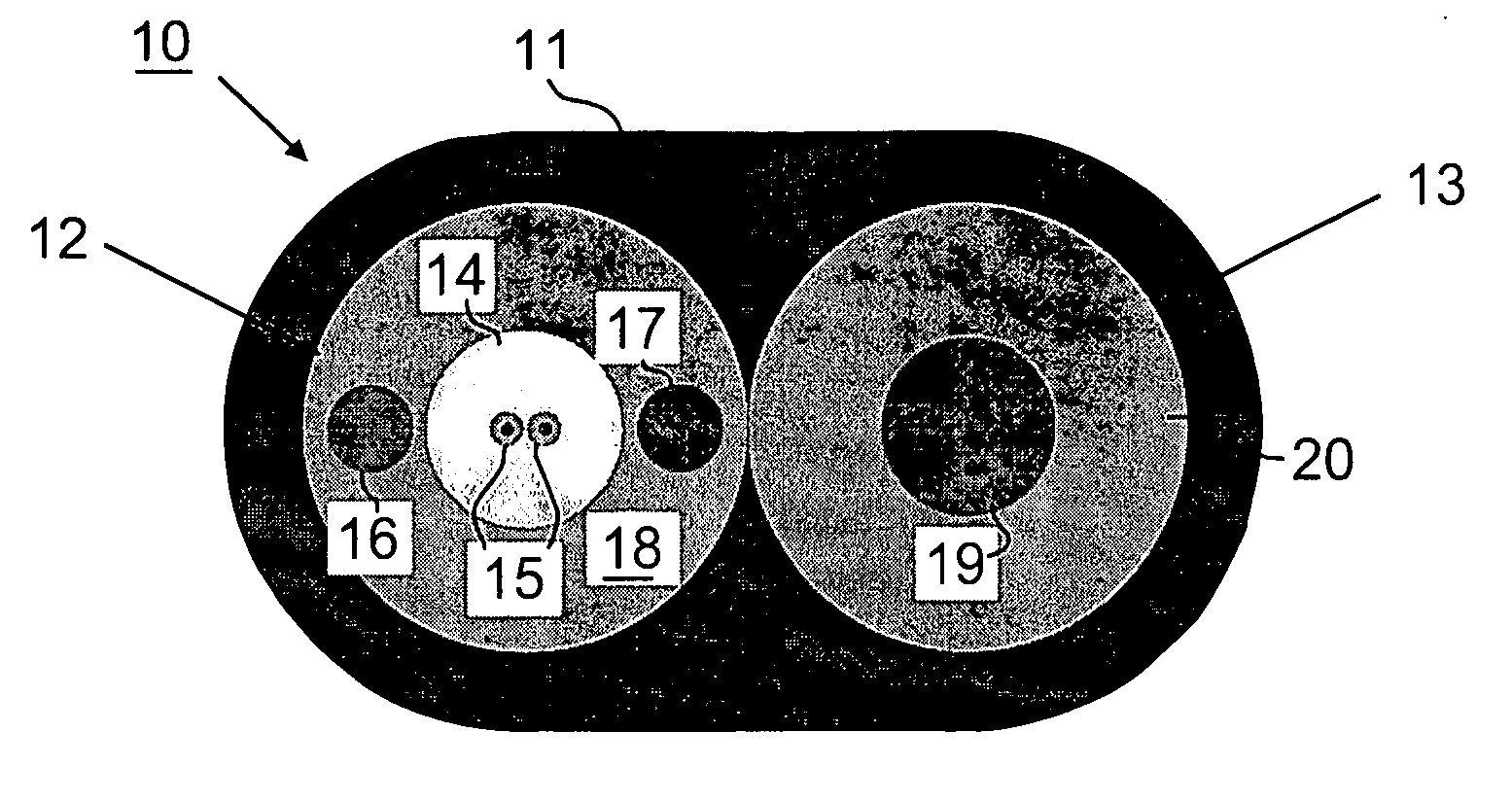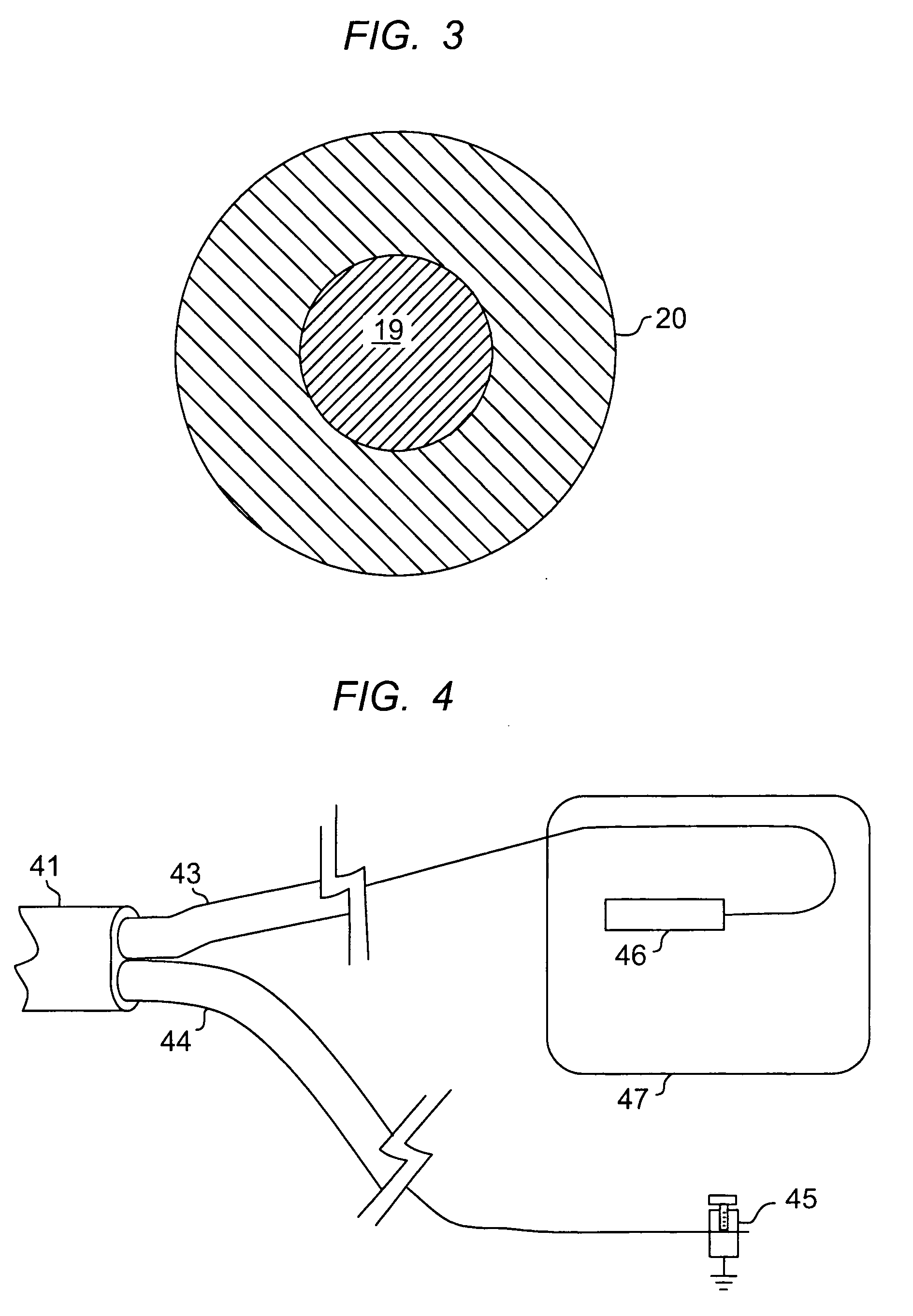Optical fiber cables
a technology of optical fiber cables and fiber optic cables, applied in the field of optical fiber cables, can solve the problems of cable fiber retraction, time-consuming installation and repair of gel filled cables, cosmetic or other problems, etc., and achieve the effect of compact size and low cos
- Summary
- Abstract
- Description
- Claims
- Application Information
AI Technical Summary
Benefits of technology
Problems solved by technology
Method used
Image
Examples
Embodiment Construction
[0016] Referring to FIG. 1, a flat optical fiber drop cable is shown generally at 10, with optical fiber subunit 12 and strength member subunit 13. Both are encased in encasement 11. The subunits are preferably approximately the same size, as shown, which imparts symmetry to the cable cross section. Alternatively, they may be different sizes. Symmetry, if desired, may be realized in the latter case by using a symmetrical die for extruding the encasement 11. In the embodiment shown, the optical fiber subunit contains two fibers 15. One fiber, or more than two fibers, may also be used.
[0017] The subunits 12 and 13 are shown in more detail in FIGS. 2 and 3. FIG. 2 is a cross section of the optical fiber subunit 12. Here, there is one optical fiber shown at 15. The optical fiber is a conventional coated glass or plastic fiber. The optical fiber subunit may have a loose fiber design, where the optical fiber floats in a tube. However, the preferred design is that illustrated, where the o...
PUM
 Login to View More
Login to View More Abstract
Description
Claims
Application Information
 Login to View More
Login to View More - R&D
- Intellectual Property
- Life Sciences
- Materials
- Tech Scout
- Unparalleled Data Quality
- Higher Quality Content
- 60% Fewer Hallucinations
Browse by: Latest US Patents, China's latest patents, Technical Efficacy Thesaurus, Application Domain, Technology Topic, Popular Technical Reports.
© 2025 PatSnap. All rights reserved.Legal|Privacy policy|Modern Slavery Act Transparency Statement|Sitemap|About US| Contact US: help@patsnap.com



